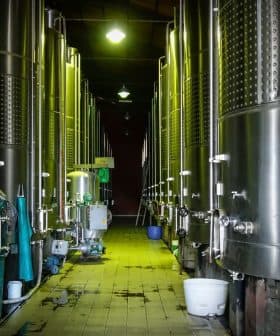European Geographical Indicators Valued at More Than $80 Billion
A study from the European Commission found that extra virgin olive oils make up $326 million of the total value of European geographical indicators. PDO and PGI oils from Spain and Italy account for nearly 40 percent of that amount.
 Baena, Spain
Baena, SpainEuropean Union products labeled with geographical indications are worth €74.76 billion, with more than one-fifth of this value coming from exports of products with Protected Geographical Indicators or Protected Designations of Origin. The value of oils and fats with geographical indicators has increased, with PDO products contributing to 80 percent of the growth in value.
European Union products labeled with a geographical indication are worth €74.76 billion ($80.74 billion), according to a recent study from the European Commission.
More than one-fifth of this value is derived from exports of products with a Protected Geographical Indicator or a Protected Designation of Origin.
Producers’ benefits are clear… Geographical indications protect local value at a global level.
“European geographical indications reflect the wealth and diversity of products that our agricultural sector has to offer,” Janusz Wojciechowski, the European agriculture commissioner, said. “By protecting products across the globe, we prevent fraudulent use of product names and we preserve the good reputation of European agri-food and drink products.”
Oils and fats account for roughly €555 million ($599 million) of the total value of geographical indicators, an increase of 59 percent from 2010. PDO products, specifically, have contributed to 80 percent of the growth in value.
See Also:Geographical IndicatorsThe driving force for growth in the oil and fats category has been both PDO and PGI extra virgin olive oils.
“Olive oils are the largest subcategory of oils and fat products under geographical indicators accounting for 54 percent of the 2017 sales value and half of the growth,” the report says.
Overall, sales of PGI and PDO extra virgin olive oils have grown from €204 million ($221 million) in 2005 to €301 million ($326 million) in 2017. The entire oil and fats category grew from €259 million ($280 million) to €555 million, in the same time period.
Extra virgin olive oils with geographical indicators in Spain represented 25 percent of the sales value and one-third of the growth. The country’s three largest PDO oils – Baena, Siurana and Sierra de Cazorla PDO – helped to lead the way.
Italian PDO and PGI oils made up another 14 percent of sales value and contributed to two percent of the growth. Terra di Bari PDO, Toscano PGI and Val di Mazara PGI, the three largest geographical indicators in the country, also contributed substantially to the growth.
A separate report out of Italy found that the value of PGI and PDO oils has steadily risen to €144 million ($155 million) and exports have reached €62 million ($67 million).
However, even as European geographical indicators for olive oil have risen steadily in value, they have experienced a significant decrease in their value premium rate – the sales value of a product with a geographical indicator relative to a comparable standard product without one.
“In 2010, olive oil was one of the products with the highest value premium rates (1.83); in 2017, it reduced to 1.04,” the report said. “This change was caused by a regular and important rise in the standard prices of virgin olive oil.”
Overall, value premium rates among European products with geographical indicators have dropped from 2.14 to 2.07 since 2010.
In spite of this decrease in value premium rates, Wojciechowski emphasized that the geographical indicator scheme continues to benefit producers.
“Producers’ benefits are clear. They can sell products at a higher value, to consumers looking for authentic regional products,” he said. “Geographical indicators are a key aspect of our trade agreements. Geographical indications protect local value at a global level.”









